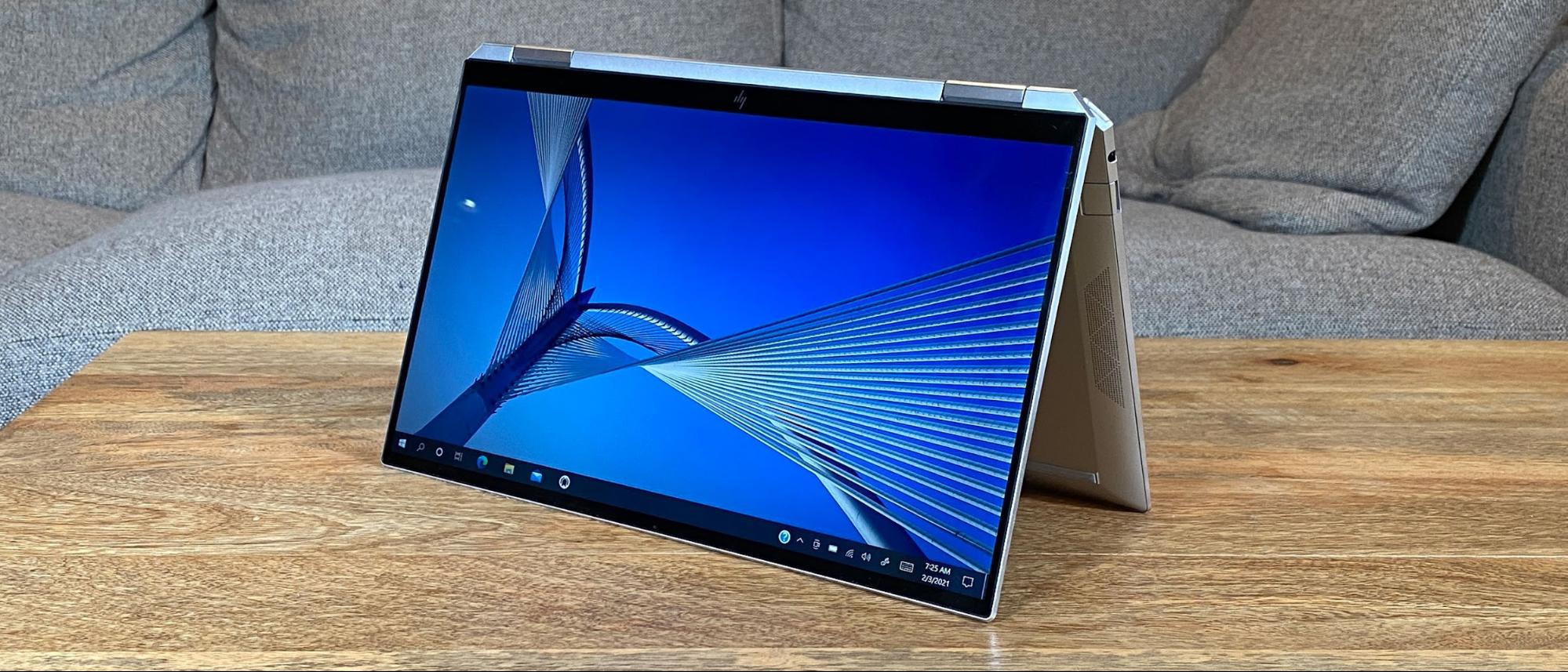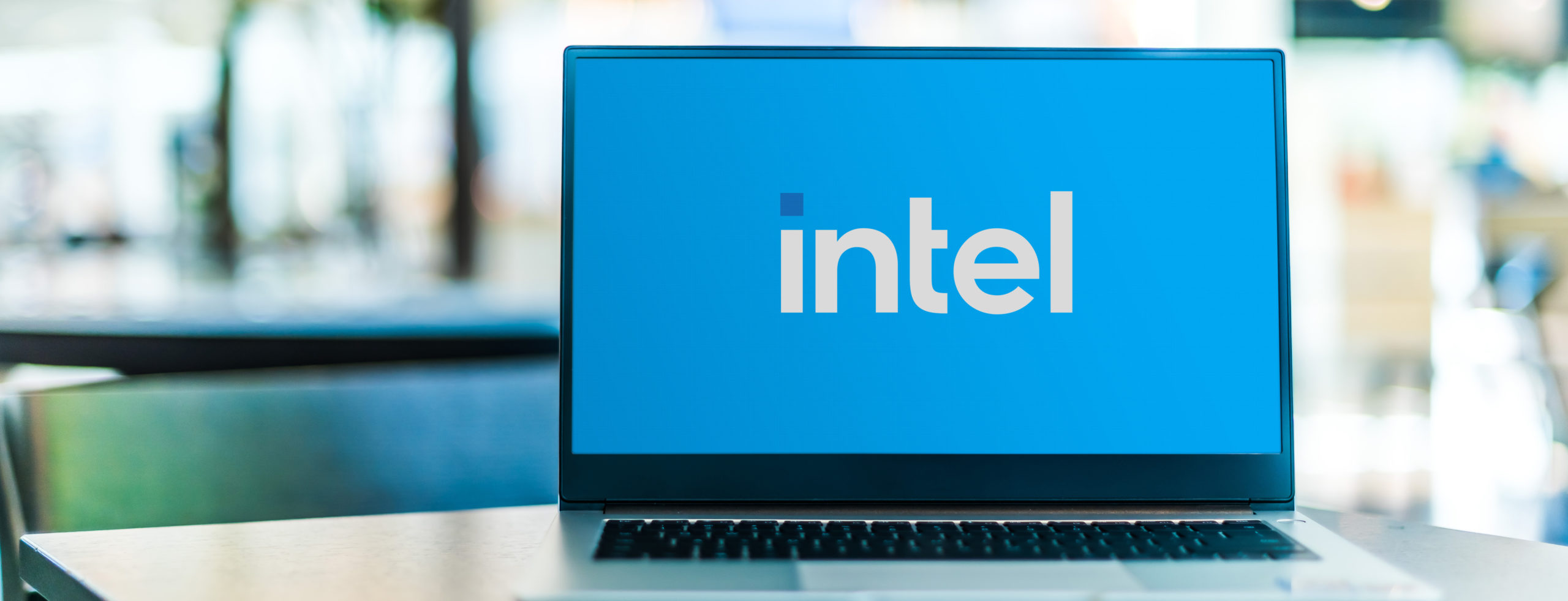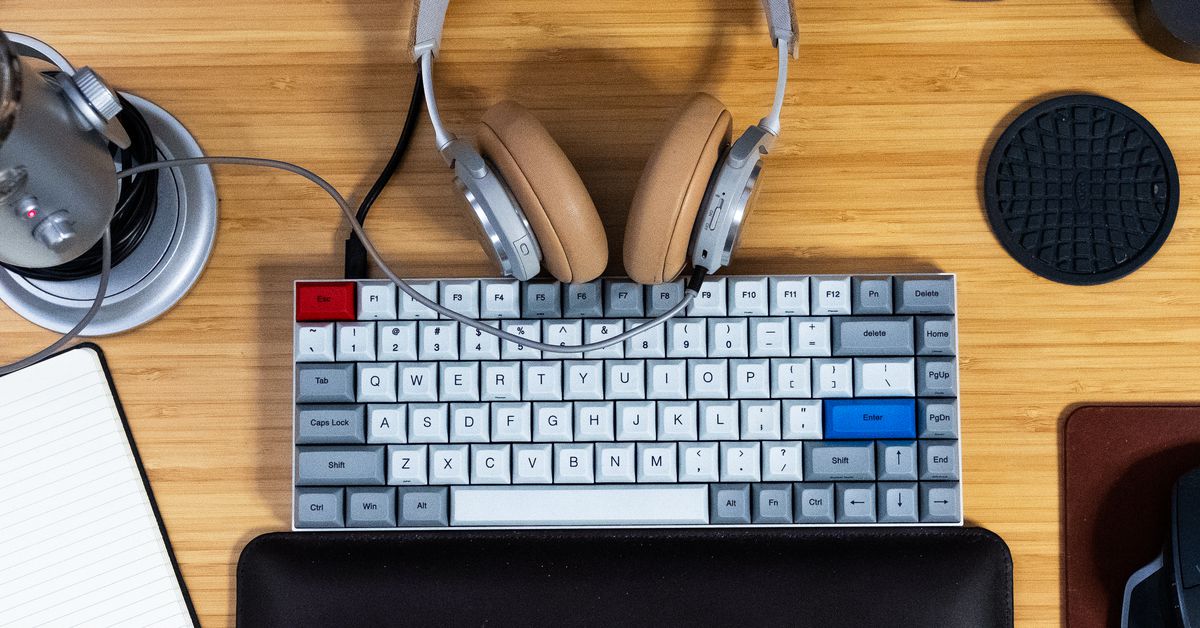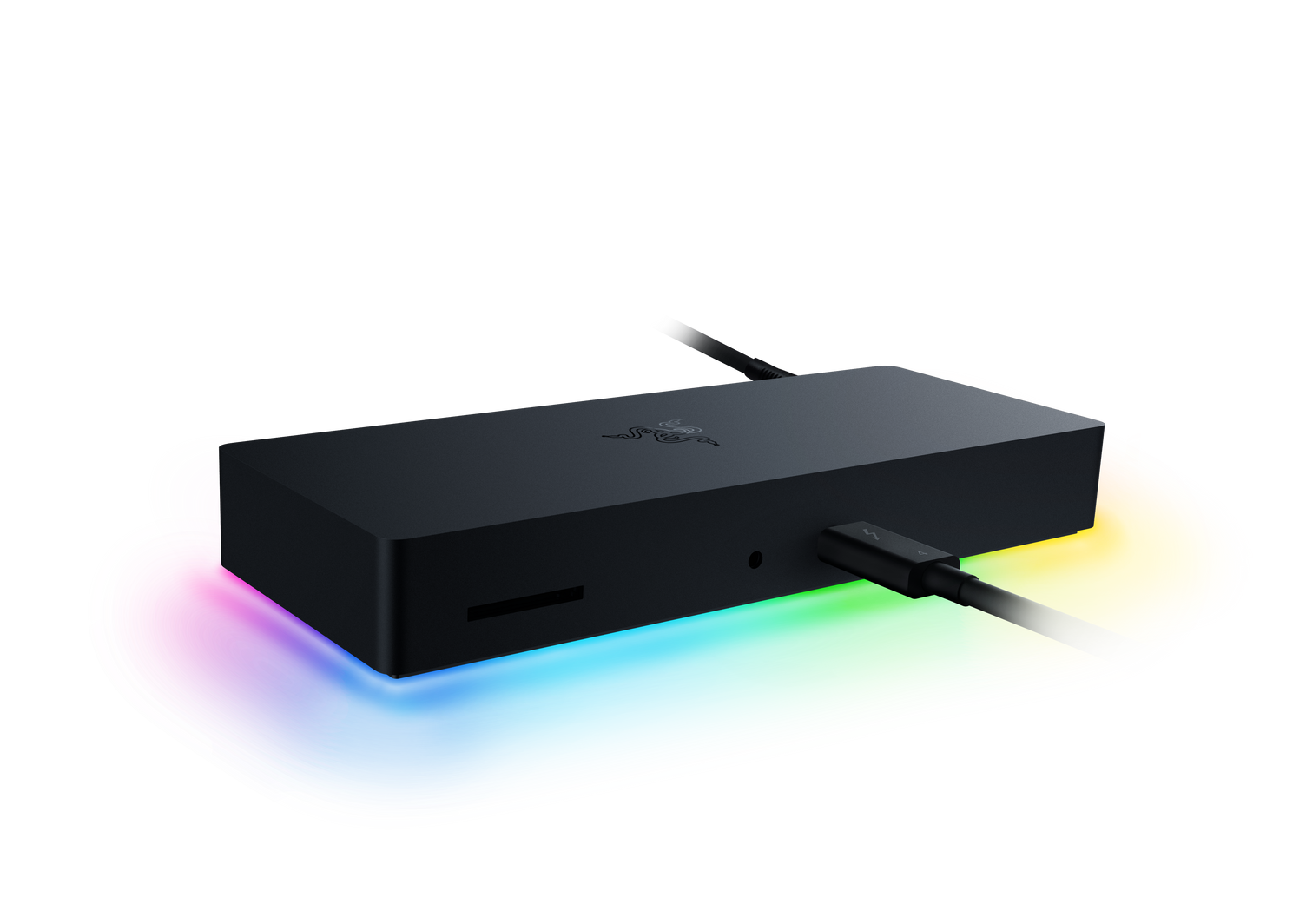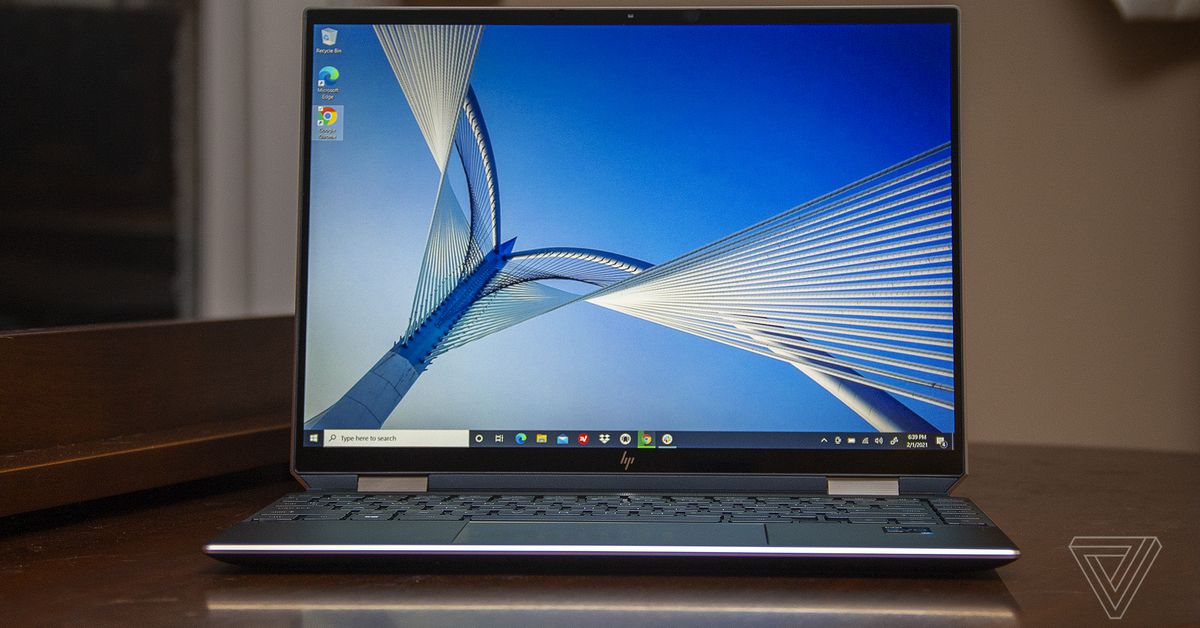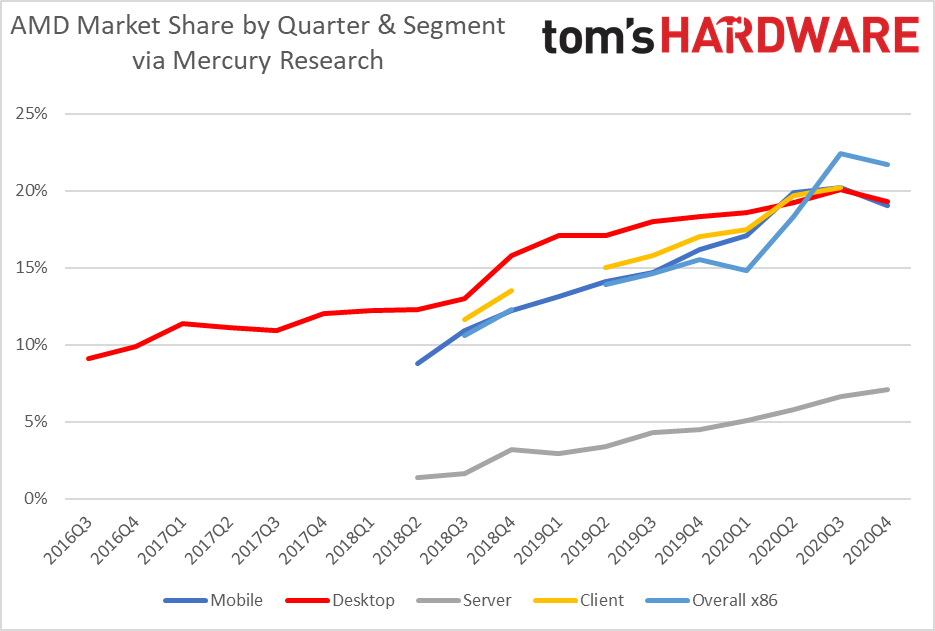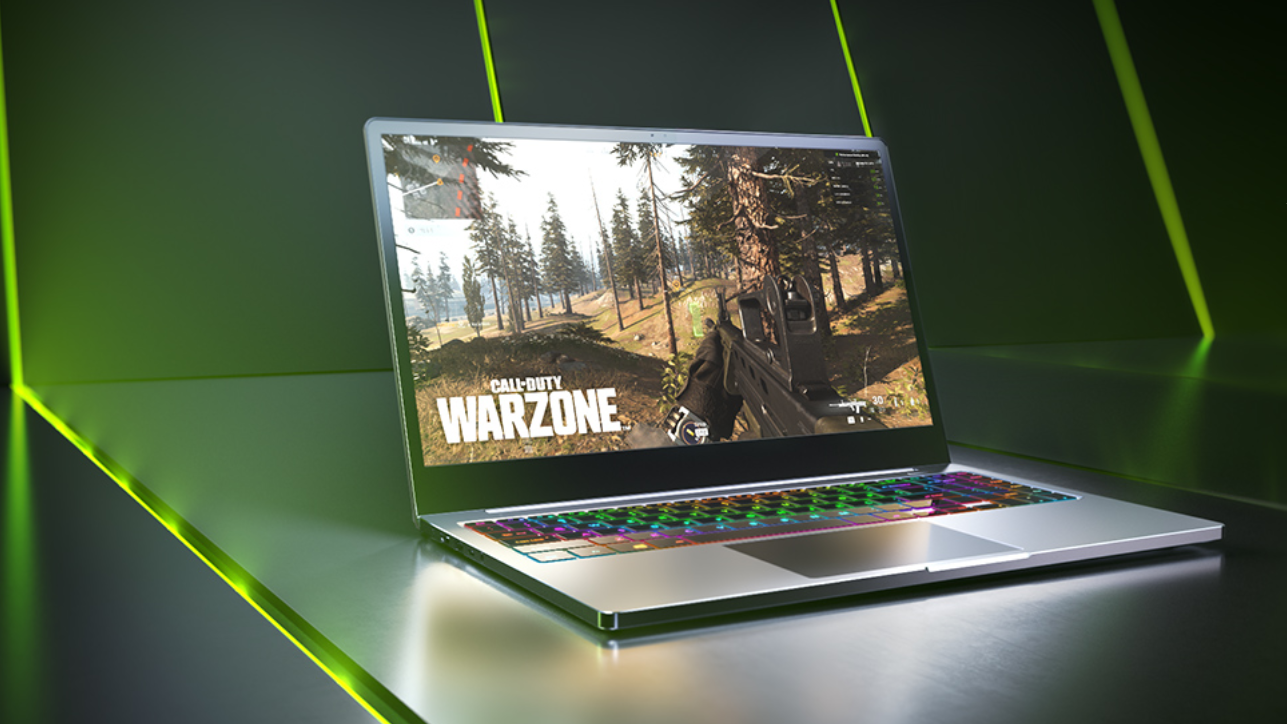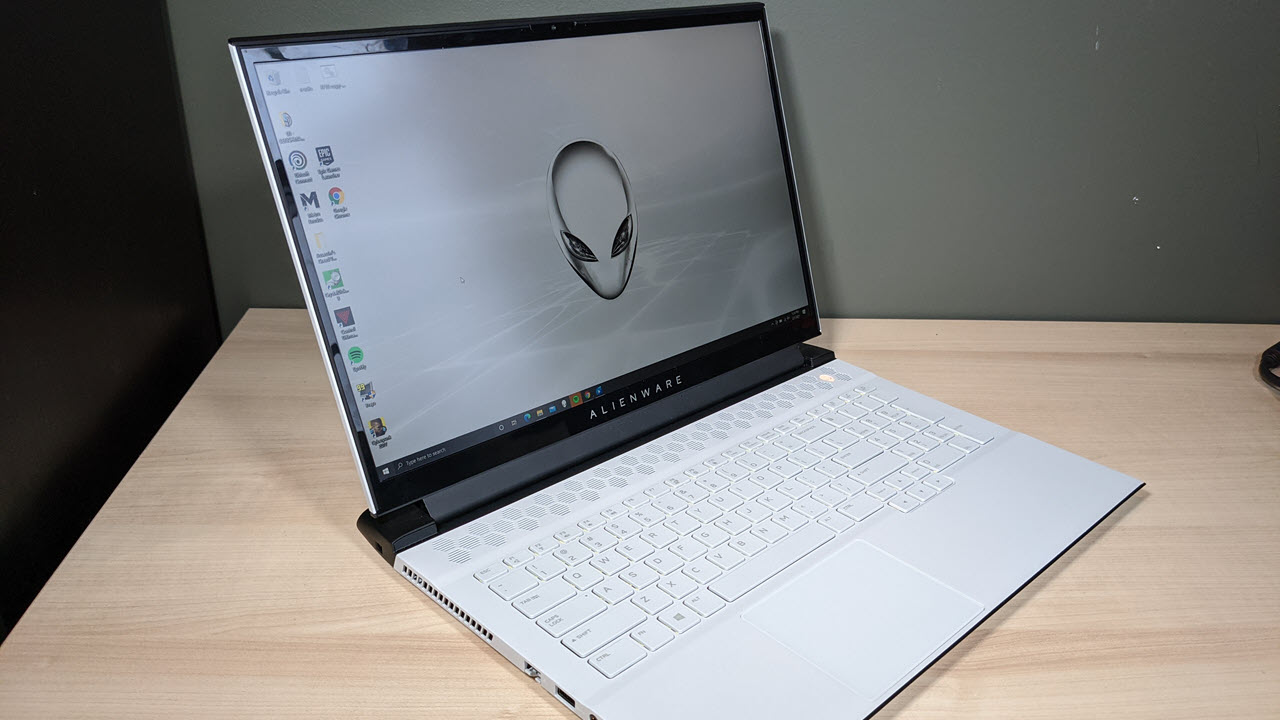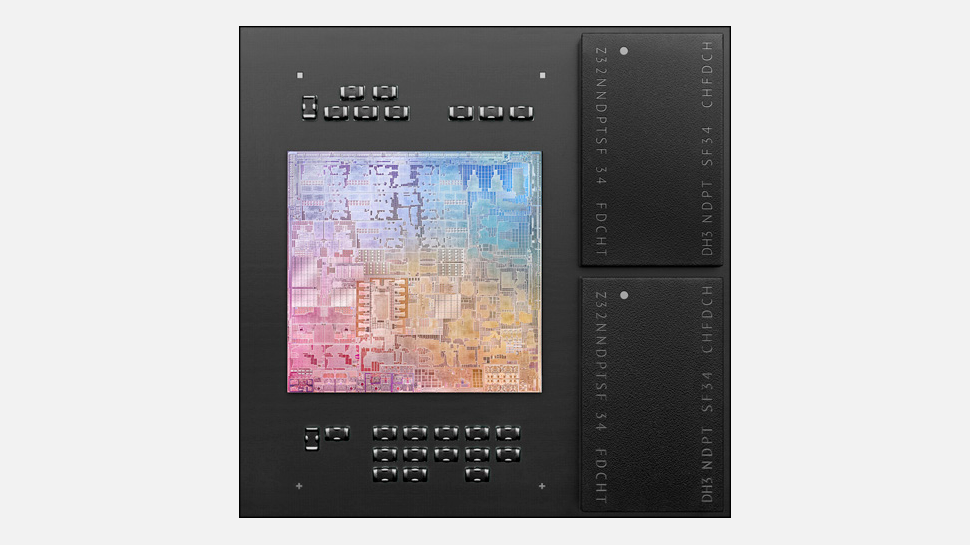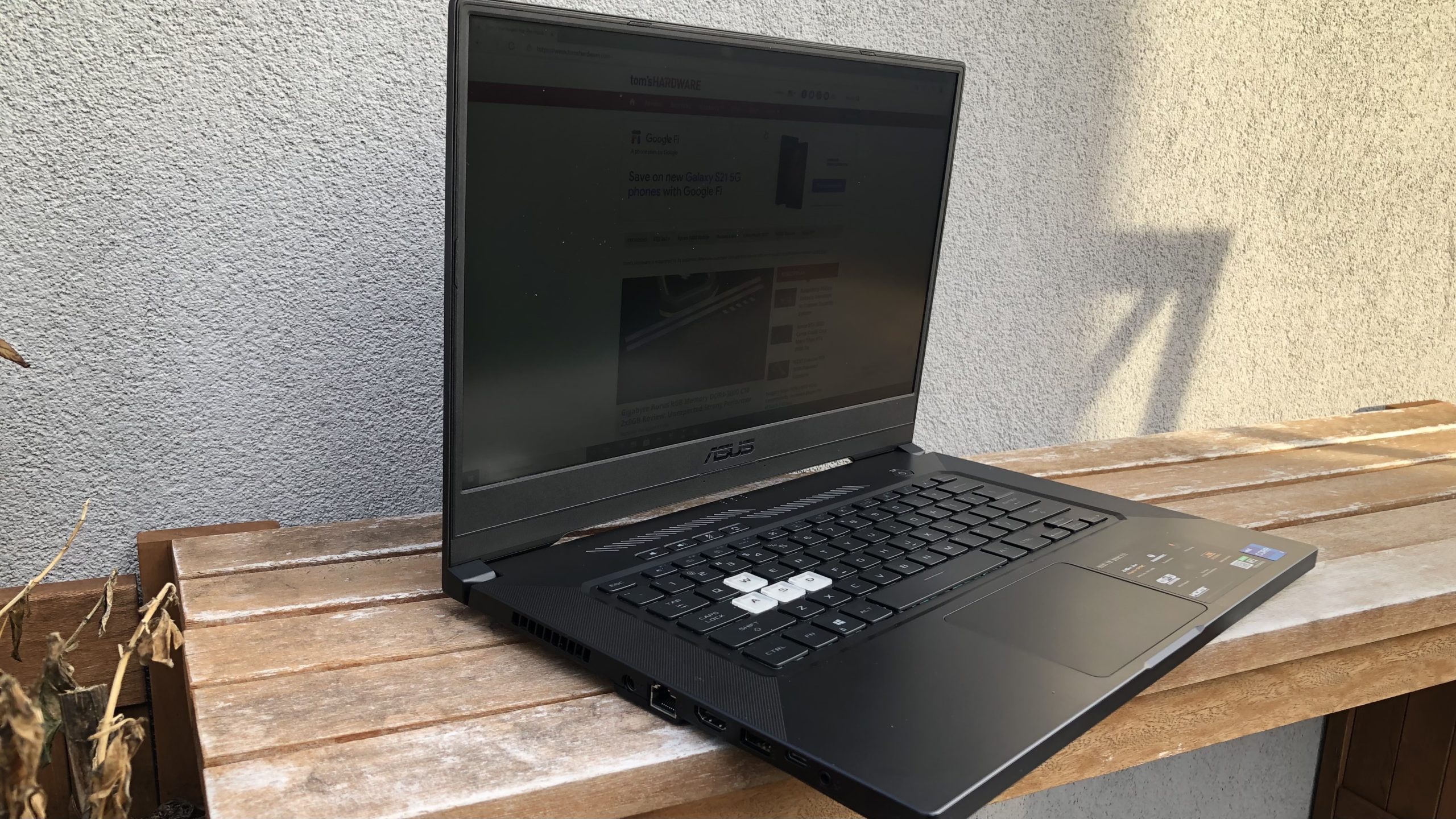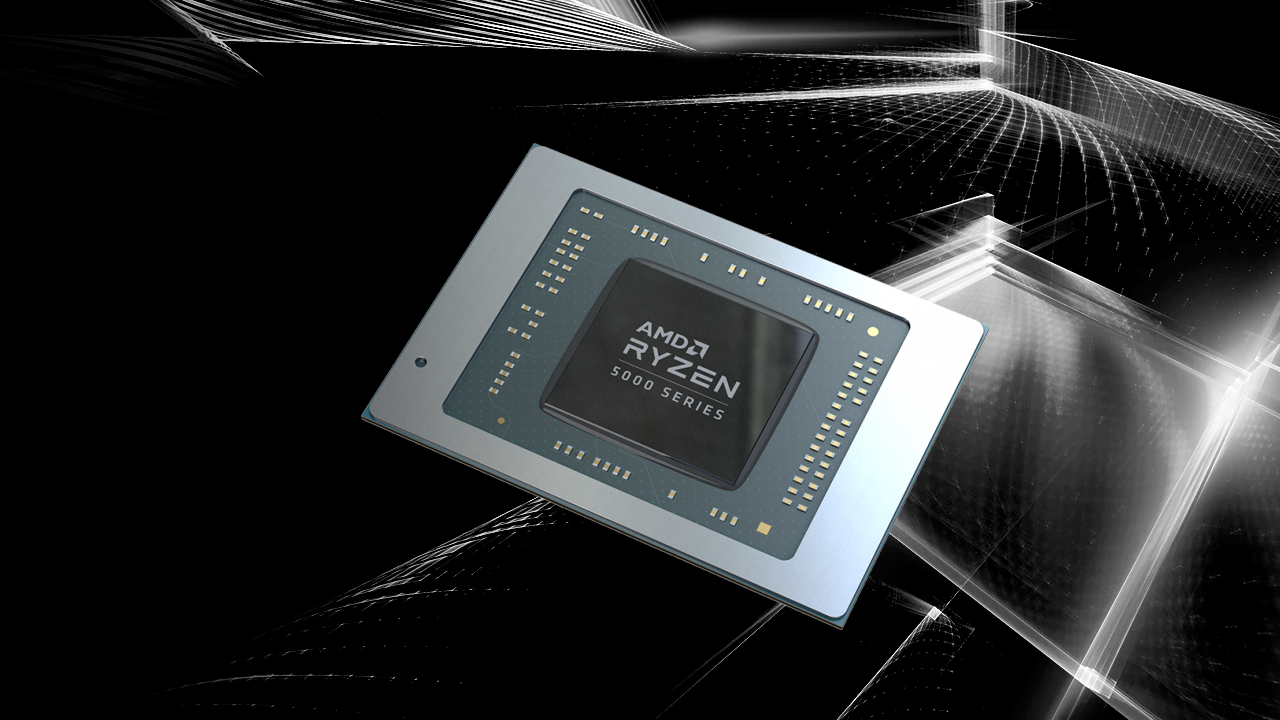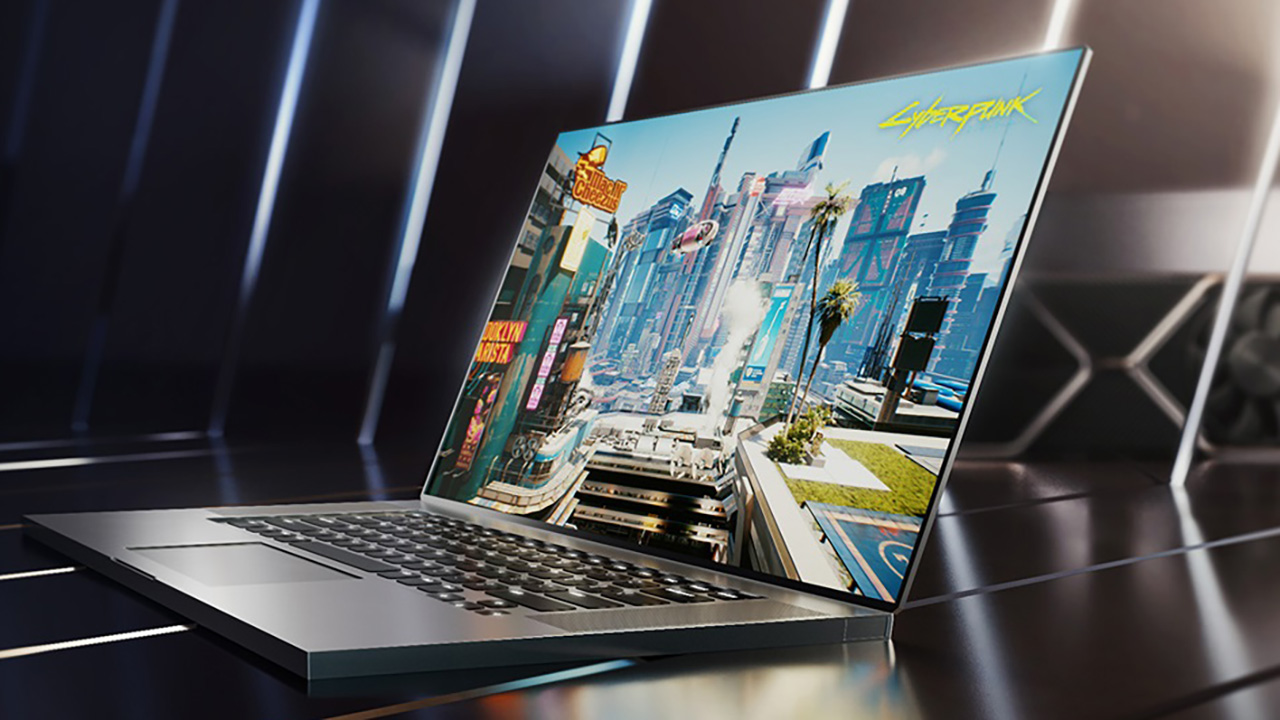Our Verdict
The HP Spectre x360 has an attractive design and long battery life, though the 16:9 display feels dated. Its only performance downside is in bursty workloads, which we saw some issues with.
For
- Sliim, attractive chassis
- Solid speakers for a laptop
- Long battery life
- Still squeezes in a USB Type-A port
Against
- 16:9 display is dated, especially as a tablet
- Not great with bursty performance
- Difficult to upgrade
Sure, the
best ultrabooks and premium laptops
are tools, but you also want your computing device to look good. Design is important, after all.
The HP Spectre 360 13t ($949.99 to start, $1,249.99 as tested) continues to be one of the best-looking Windows devices out there, with a refined, thin design and clever port placement with both Thunderbolt 4 and USB Type-A.
But a tool also has to do the job well. With a 16:9 screen, the Spectre x360 can still, well, compute, but it doesn’t show as much as some others. And then there’s the question of whether or not this laptop can tame Intel’s latest Tiger Lake processors.
Design of the HP Spectre x360 13-inch
Image 1 of 2
Image 2 of 2
HP’s Spectre lineup has had an aesthetic that would make a jeweler proud for the last few years. The Spectre x360 13t is no different there. The laptop, made from silver aluminum (it comes in black or blue for an extra cost), and has a reflective, modernized HP logo that I think the company should really start using on all of its products. But what makes it stand out are the cut-off corners near the back hinge, one of which has the power button while the other houses a Thunderbolt 4 port.
Those corners are always accessible, and easy enough to reach whether the laptop is being used as a notebook or a tablet.
The 13.3-inch display has very thin bezels, but looks short and squat with a 16:9 aspect ratio. As more notebooks move to taller 16:10 displays, like the
Dell XPS 13
and
MacBook Pro
or a 3:2 display like the
Microsoft Surface Laptop 3
, it makes the whole design here, not just the screen, seem a little cramped and dated. (HP does have a 3:2 Spectre x360 with the 14-inch version of this laptop, which we hope to be able to test soon.)
HP has packed in a full-size keyboard, including a row for home, page up, page down and end keys, and the rest of the construction is aluminum. This thing is built solid.
Image 1 of 2
Image 2 of 2
While thicker notebooks may have more ports, HP hasn’t given up on USB Type-A here, which I really appreciate. The left side of the notebook has a USB 3.2 Gen 1 Type-A with a drop-jaw hinge to squeeze it into the chassis, as well as a 3.5 mm headphone jack. The right side has two Thunderbolt 4 ports (one in the top-right corner), a kill switch for the camera, and a microSD card reader.
The Spectre x360 13 measures 12.08 x 7.66 x 0.67 inches and weighs 2.8 pounds. That makes it ever so slightly lighter than the Dell XPS 13 2-in-1 9310, which is 2.9 pounds and 11.6 x 8.15 x 0.56 inches. The Asus ZenBook Flip S UX371 is a slighter 2.7 pounds and 12 x 7.3 x 0.6 inches. Apple’s MacBook Pro, a clamshell, is 3 pounds and 11.97 x 8.36 x 0.61 inches.
HP Spectre x360 13-inch Specifications
| CPU | Intel Core i7-1165G7 |
| Graphics | Intel Iris Xe Graphics |
| Memory | 16GB LPDDR4X-4266 |
| Storage | 512GB PCIe NVMe SSD with 32GB Intel Optane |
| Display | 13.3-inch, 1920 x 1080 IPS touchscreen |
| Networking | Intel Wi-Fi 6 AX 201 (2×2) and Bluetooth 5 |
| Ports | 2x Thunderbolt 4, USB 3.2 Gen 1 Type-A, Headphone/microphone jack, microSD card reader |
| Camera | 720p IR |
| Battery | 60 WHr |
| Power Adapter | 65 W |
| Operating System | Windows 10 Home |
| Dimensions(WxDxH) | 12.08 x 7.66 x 0.67 inches / 306.83 x 194.56 x 17.01 mm |
| Weight | 2.8 pounds / 1.27 kg |
| Price (as configured) | $1,249.99 |
Productivity Performance HP Spectre x360 13-inch
The Spectre is the latest machine we’ve tested with Intel’s Core i7-1165G7 “Tiger Lake” mobile processors. Our configuration of the 2-in-1 has paired that with 16GB of RAM, a 512GB Intel SSD and 32GB of Intel Optane memory.
Image 1 of 4
Image 2 of 4
Image 3 of 4
Image 4 of 4
On comparable versions of Geekbench 5, an overall performance benchmark, the Spectre had a single core-score of 1,574 and a multi-core score of 4,749. The ZenBook Flip S had a higher multi-core score (4,952) but a lower single-core score (1,512) with the same CPU. The Dell XPS 13 2-in-1, also with the same Core i7, has a far higher multi-core score (5,639) but a lower single-core score (1,532). On the same test, the MacBook Pro had a multi-core score of 5,925 and a single-core score of 1,316, and that was through Rosetta emulation that can decrease performance.
The Spectre transferred 25GB of files at a rate of 452.62 MBps, edging out the XPS 13 2-in-1. But the ZenBook Flip S out-performed here at 979.37
It took the Spectre x360 18 minutes and 39 seconds to complete our Handbrake test, which transcodes a 4K video to 1080p. That’s faster than the ZenBook, though the XPS 13 2-in-1 had it beat, while the MacBook Pro was more than five minutes faster than the Spectre, even through Rosetta 2 emulation.
We also ran the Spectre through our stress test, which runs Cinebench R23 twenty times on a loop. The results were largely in the high 3,000’s, occasionally peaking over 4,000. Towards the end, it was a bit erratic. The CPU ran at an average of 2.52 GHz and an average temperature of 64.88 degrees Celsius (148.78 degrees Fahrenheit). HWInfo’s monitoring software detected several instances of cores’ power limits being exceeded.
Display on the HP Spectre x360 13-inch Specifications
Our review unit has a 13.3-inch, 1920 x 1080 touchscreen with a 16:9 aspect ratio. That seems a bit squat, even outdated, compared to some competitors, which have moved on to 16:10 or 3:2 displays that are taller and show more of your work at once. It’s also more natural for tablet mode.
Part of my testing included watching the trailer for The Falcon and The Winter Soldier. Some explosions early in the trailer showed some intense burst of orange, though some scenes on a football field had fireworks that didn’t pop against the night sky as much as I would have liked to see. It’s usable, but not the best I’ve seen.
The Spectre’s IPS display covered 67.7% of the DCI-P3 color gamut, in the range of the XPS 13 2-in-1 (70%). We reviewed the ZenBook Flip S with an OLED display that hit 113.1% (you can get the Spectre with OLED; see configurations below). Apple’s 13-inch MacBook Pro reached 78.3%.
HP’s display measured an average of 391 nits of brightness, beating the ZenBook, but falling short of the MacBook Pro and the XPS 13 2-in-1.
Keyboard and Touchpad on the HP Spectre x360 13-inch
The keyboard on the Spectre x360 is comfortable, with a satisfying click (at least, as far as membranes go), that bounces up in a responsive fashion.
My bigger issue was the wristrest. The deck is a bit short, so my hands hung off it while I typed. I hit 88 words per minute on the 10fastfingers.com typing test, which is a bit low for me; I’m generally in the high 90’s. It wasn’t because of the keyboard, but because I was floating my wrists in the air. A taller screen would require a longer deck, which could help solve this.
I would prefer that the 4.4 x 2.2 inch touchpad be a bit taller, but there’s also not any room for that on the device. Still, the vertical height was slightly limiting, and I often hit the edge of it. That said, the precision touchpad is sensitive enough that I was able to perform gestures, even with four fingers, without any issues.
Audio on the HP Spectre x360 13-inch
For such a trim device, HP is offering up decent quality sound. The bottom-firing speakers, tuned by Bang & Olufsen, were clear with detailed sound. In Yellowcard’s “City of Devils,” the mix of violins, guitars, cymbals and drums were well leveled and textured, though, like many laptops, the bass wasn’t particularly perceptible.
The included Bang & Olufsen Audio control app helped that a bit when I switched to the Bass equalizer preset, but I preferred the overall mix of the default settings, which better highlighted the violins and vocals.
Upgradeability of the HP Spectre x360 13-inch
There are only two visible screws (a pair of Torx) on the bottom of the Spectre x360. If only things were that easy.
There are four additional Phillips-head screws beneath one of the laptop’s two adhesive-backed rubber feet. Removing the foot could potentially rip or tear it, making it difficult to replace later, so the average person probably shouldn’t attempt to open the laptop up.
Per HP’s maintenance manual for this laptop, the battery, Wi-Fi card and SSD are all replaceable if you do get in there, though the RAM is soldered down.
For most people, we recommend ensuring you get the configuration with enough storage and RAM to future proof it for you. Enthusiasts who can risk that rubber foot will find some upgradeable and repairable parts inside.
Battery Life on the HP Spectre x360 13-inch
This 2-in-1 has some endurance. While it comes with a nice USB Type-C charger with a braided cable, you should be able to go quite a while without it. The Spectre ran for 12 hours and 32 minutes on our battery test, which continuously browses the web, runs OpenGL tests and streams video over Wi-Fi, all at 150 nits of brightness.
It outlased both the Dell XPS 13 2-in-1, which ran for 10:52, and the Asus ZenBook Flip S, which lasted 8:11. But Apple’s MacBook Pro, powered by its incredibly-efficient M1 processor, lasted four hours longer at 16:32.
Heat on the HP Spectre x360 13-inch
Beyond internal temperatures, we took skin temperatures while we ran our Cinebench R23 stress test.
The center of the keyboard, between the G andH keys, measured 36.2 degrees Celsius (97.16 degrees Fahrenheit), though the keyboard was a cooler 29 degrees Celsius.
The hottest point on the bottom of the laptop hit 41.7 degrees Celsius (107.06 degrees Fahrenheit).
Webcam on the HP Spectre x360 13-inch
The 720p camera in the Spectre x360’s bezel produces blurry images and doesn’t capture color well. In a shot at my desk, My blue eyes looked dark, my orange shirt muted, and the whole image was covered in visual noise.
Is it usable? Sure. But you may also want to consider buying best webcams for improved image quality. There’s a kill switch on the right side of the laptop for extra privacy when you’re not using the webcam.
Software and Warranty on the HP Spectre x360 13-inch
Most of the software preinstalled on the Spectre is from HP itself. The most important is HP Command Center, a one-stop-shop to choose between performance presets, network prioritization for applications and system information. The others include HP Support Assistant (which I think could be rolled into Command Center), HP Privacy Settings and a link to the user manual for the laptop. There’s also MyHP, which gives you easy access to your serial numbers and a bunch of short tutorials for Windows and Microsoft Office.
Of course, there’s still the bloat that comes with most Windows 10 installs, like Spotify, Hulu, Roblox and Hidden City: Hidden Object Adventure.
HP sells the 13-inch Spectre x360 with a 1-year warranty that can be extended at an additional cost.
HP Spectre x360 13-inch Configurations
We tested the Spectre x360 with an Intel Core i7-1165G7, 16GB of RAM, 512GB of storage with 32GB of Intel Optane memory and a 1920 x 1080 IPS touchscreen. All of that comes for $1,249.99.
The base model is $949.99, with an Intel Core i5-1135G7, 8GB of RAM, a 1080p screen and a 256GB M.2 PCIe NVMe SSD.
Many of the components are configurable. You can go up to a
4K
UHD OLED touch screen (add $180), or opt for FHD
OLED
(add $30) or even WLED with Sure View Privacy (a $60 extra.) Storage goes up to a 2TB PCIe SSD. If you don’t want the silver color, you can pay $10 for black or $20 extra for blue.
The most expensive version, with a “Poseidon blue” chassis, Windows 10 Pro and the maximum specs runs $1,869.99.
Bottom Line
In its latest iteration, the 13-inch HP Spectre x360 continues to be an attractive choice, quite literally. The Spectre remains one of the best-looking notebooks on the market, and it’s sleek and trim. Its battery life is impressive, and the Bang & Olufsen audio is pretty good for a 2-in-1 laptop.
While many ultrabook owners may not use their laptops for the most intense workloads, those who do may notice the issues we saw in our Cinebench gauntlet. That’s not a huge issue for day-to-day use, but enthusiasts or power users may seek other options.
If you’re looking for a convertible 2-in-1, the go-to continues to be the
Dell XPS 13 2-in-1
, which offers strong performance and a taller, 16:10 display that works better as a tablet. You will, however, give up the full-sized USB Type-A port. HP also offers a comfier keyboard, in this author’s opinion, though a short wrist rest mars the typing experience.
But if a mix of style and endurace strikes your fancy, the Spectre x360 should be under consideration, though I’m hoping we can check out the 14-inch, 3:2 version soon.
